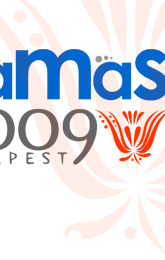| |
 |
 |
| Inspiration source: (Multi-)Robotics |
Area Chairs: Silvia Coradeschi and Erol Sahin
Papers on theory and applications concerning multi-robotic systems are encouraged, namely those focusing on real robots interacting with their surrounding environments. The goal is to foster interaction
between researchers in multi-agent and multi-robot systems, so as to provide a cradle for cross-fertilization of concepts from both fields.
The papers choosing this track should relate to one or more of the following topics:
1) coordination methods (as well as their automated design) in multi-robot systems,
2) modeling and analysis of multi-robot systems,
3) tools that are relevant for multi-robot studies,
4) applications of multi-robot systems to real-world problems.
Although not limited to, results that are obtained from (or directly relate to) physical multi-robot systems are preferred. In simulation-only studies, the physical embodiment of robots as well as their realistic sensing and signaling abilities should be consistent with that observed in real-world. The authors are expected to justify the robot and environment models with the available robotics technology as much as possible. For instance, the assumption that all robots have access to perfect localization information (a common hype generated by the GPS technology) is not consistent with the current technology, would render most robotics problems (such as mapping) trivial.
When registering your paper for this special area track, please select:
Inspiration source: (Multi-)Robotics
The other axes must be chosen according to the paper submitted. As an example, a paper that fits into topic 2 above describing a formal system for conflict avoidance, might choose Theoretical on the Description Level Axis and Interactions: conflict resolution/negotiation on the Focus Axis (Keyword).
For more information about the deadlines and formats, please refer to the Information for Authors and Submission Details pages. |
|
| |
|
|



